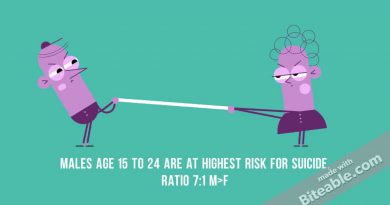The Neurobiological Impact of Psychological Trauma: The HPA Axis, Anxiety and Depression
Please click the link above to SUBSCRIBE and click the bell to be notified of new videos.
Sponsored by TherapyNotes.com
Manage your practice securely and efficiently. Two free months of TherapyNotes with coupon code “CEU”
CEUs are available for this presentation at https://www.allceus.com/member/cart/index/product/id/1169/c/
Want to listen to it as a podcast instead? Subscribe to Counselor Toolbox Podcast https://pod.link/1120947649
Objectives
~ Define and explain the HPA-Axis
~ Identify the impact of trauma on the HPA Axis
~ Identify the impact of chronic stress/cumulative trauma on the HPA-Axis
~ Identify symptoms of HPA-Axis dysfunction
~ Identify interventions useful for this population
Based on
~ Post-traumatic stress disorder: the neurobiological impact of psychological trauma
Dialogues Clin Neurosci.
What is the HPA Axis
~ Hypothalamic-Pituitary-Adrenal Axis
~ Controls reactions to stress and regulates digestion, the immune system, mood and emotions, sexuality, and energy storage and expenditure
~ The signs and symptoms of HPA-Axis dysfunction reflect a persistent, abnormal adaptation of neurobiological systems to trauma or chronic stress.
~ Hypothyroid (4.6%)
~ IBS symptoms such as constipation and diarrhea
~ Reduced tolerance to physical and mental stresses (including pain)
Emotional Valence
~ The NEVER (Negative Emotional Valence Enhances Recapitulation ) model of emotional valence, asserts that the greater the number of stimuli related to the unpleasant event that are remembered, the greater the likelihood that the person will encounter reminders of the event leading to increased recapituation.
~ Recapitulation initially leads to repeated HPA-Axis activation, but over time the continued stress prolongs the inflammatory response via continued activation of the HPA-Axis leading to glucocorticoid resistance causing cells to become less sensitive to cortisol to protect them from the persistent secretion.
Glucocorticoids
~ Low cortisol levels (glucocorticoid resistance) at the time of exposure to psychological trauma may predict the development of PTSD. (Prior trauma or chronic stress exposure may predispose to PTSD)
Physiological Changes Due to Hypocortisolism
~ Sustained HPA-Axis activation causes persistently high levels of CRH which eventually causes a blunting of the ACTH response to CRH stimulation
~ Disinhibition of corticotropin releasing hormone (CRH) and norepinephrine which lead to an exaggerated response to acute stressors and corresponding increase in cortisol.
~ Exposure to additional stressors produces stronger trauma-related symptoms in part due to the exaggerated HPA-Axis response causing the stressor to have a stronger negative emotional valence
~ Exaggerated elevation of cortisol during exposure to acute stressors increases the sensitivity of NMDA receptors, which makes the brain generally more vulnerable to excitoxic effects of stress
Physiological Changes Due to Hypocortisolism
~ The volume of the hippocampus which controls not only the HPA-Axis and stress responses, but also declarative memory is reduced due to the excitotoxic environment.
~ Amygdala activity increases and promotes hypervigilance and impairs threat discrimination
~ Reduced prefrontal cortex volume impairs executive functioning and impulse control
~ Reduced anterior cingulate volume impairs the extinction of fear responses
~ Thyroid hormones become imbalanced leading to abnormal T3:T4 ratio and increases in anxiety
Neurochemical Factors
~ GABA (inhibitory) activity is decreased, and glutamate (excitatory) activity is increased
~ GABA has profound anxiolytic effects in part by inhibiting the CRH/NE circuits
~ Patients with PTSD exhibit decreased peripheral benzodiazepine binding sites.
~ May indicate the usefulness of emotion regulation and distress tolerance skills due to potential emotional dysregulation
~ We need to reduce excitotoxicity in order to reduce distress, improve stress tolerance and enable the acquisition of new skills
Physiological Changes Due to Hypocortisolism
~ Increased dopamine and norepinephrine levels increase arousal, startle response, fear memory encoding and increased HPA-Axis activation in response to recapitulation.
~ Changes to the ratios of estrogen, testosterone and progesterone occur which impact the body’s ability to modulate cortisol levels
~ Prolonged psychological stress suppresses estrogen causing amenorrhea which has profound effects on cardiac, skeletal, psychological and reproductive systems
~ Serotonin levels are simultaneously decreased in parts of the brain disrupting communication between the amygdala and the hippocampus which leads to increased vigilance, startle, impulsivity, and memory intrusions, hostility, aggression, depression, and suicidally adacb





